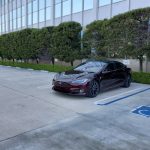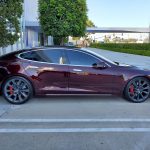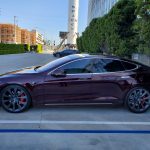
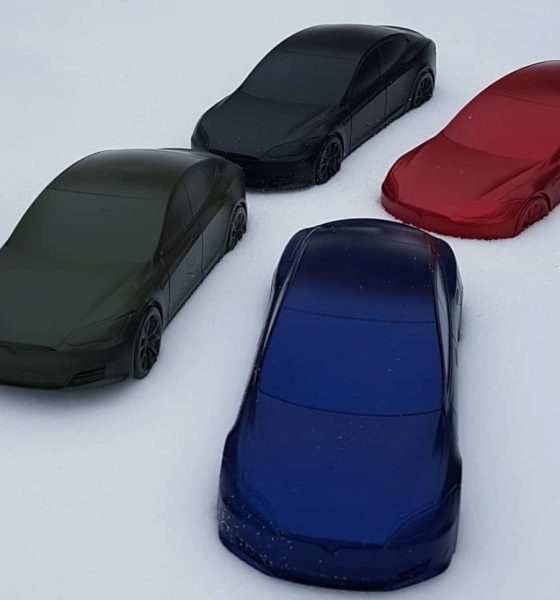
News
Tesla Giga Berlin employee hints at new colors from world-class paint facility
Tesla Giga Berlin is the home of a new, world-class paint facility, and an employee showed what new colors could be coming to the automaker’s lineup of all-electric vehicles.
Senior Recruiter for Tesla’s Gigafactory Berlin Lydia van de Laar shared a photo of what appears to be several die-cast models of the Tesla Model S in four colors, including a Vibrant Red, Solid Black, Metallic Blue, and what appears to be a new, Deep Green.
“Starting the week with fresh snow and some lovely little Tesla cars. Loving the different colors,” van de Laar wrote in a LinkedIn posting. Several more photographs were uploaded to their Instagram account, revealing what could possibly be the factory’s new, revolutionary colors.
View this post on Instagram
In April 2020, Tesla CEO Elon Musk said that Giga Berlin would be home to the world’s “most advanced paint shop, with more layers of stunning colors that subtly change with curvature.” Since then, numerous developments have taken place at Tesla’s first European production plant. Automated machinery from Geico Taikisha was spotted at the facility in mid-September, hitting toward an “alien dreadnought-style” paint shop at the German production facility.
Tesla’s Elon Musk reveals first of Giga Berlin’s unique paint options
Musk confirmed that new colors would be available at Giga Berlin, including a “deep crimson” that his Model S appears to be applied with. This Model S was spotted at SpaceX Headquarters in Hawthorne, California, and could be the first example of the wide array of colors at the new facility in Europe.
- Tesla Model S with new paint color. (Photo via Ryan McCaffrey of the Ride the Lightning Podcast)
- Tesla Model S with new paint color. (Photo via Ryan McCaffrey of the Ride the Lightning Podcast)
- Tesla Model S with new paint color. (Photo via Ryan McCaffrey of the Ride the Lightning Podcast)
- Tesla Model S with new paint color. (Photo via Ryan McCaffrey of the Ride the Lightning Podcast)
For years, Tesla has struggled with paint quality, and Musk has admitted it has been a weak point for the automaker. Tesla filed several applications to have its paint facility in Fremont revised in April 2020, and it seems to have done wonders for color quality. In a recent interview with Sandy Munro, the teardown expert told Teslarati that the paint on his 2021 Model 3 refresh was outstanding. He had relatively no complaints and was happy with the color quality of his all-electric sedan.
Tesla planned to upgrade both the Fremont Factory and Shanghai Gigafactory’s paint facilities but remarked it was difficult because the plants were manufacturing vehicles at all hours.
To be clear, Fremont & Shanghai will also be upgraded over time, but it’s hard to retrofit these improvements to an operating paint shop
— Elon Musk (@elonmusk) April 15, 2020
Giga Berlin is expected to begin production in Summer 2021, starting with the Model Y crossover. Currently, the online Design Studio still lists the five standard Tesla colors for the Model Y, but this could be updated as production and deliveries begin.
H/t: @Gf4Tesla

Elon Musk
Tesla CEO Elon Musk announces major update with texting and driving on FSD
“Depending on context of surrounding traffic, yes,” Musk said in regards to FSD v14.2.1 allowing texting and driving.
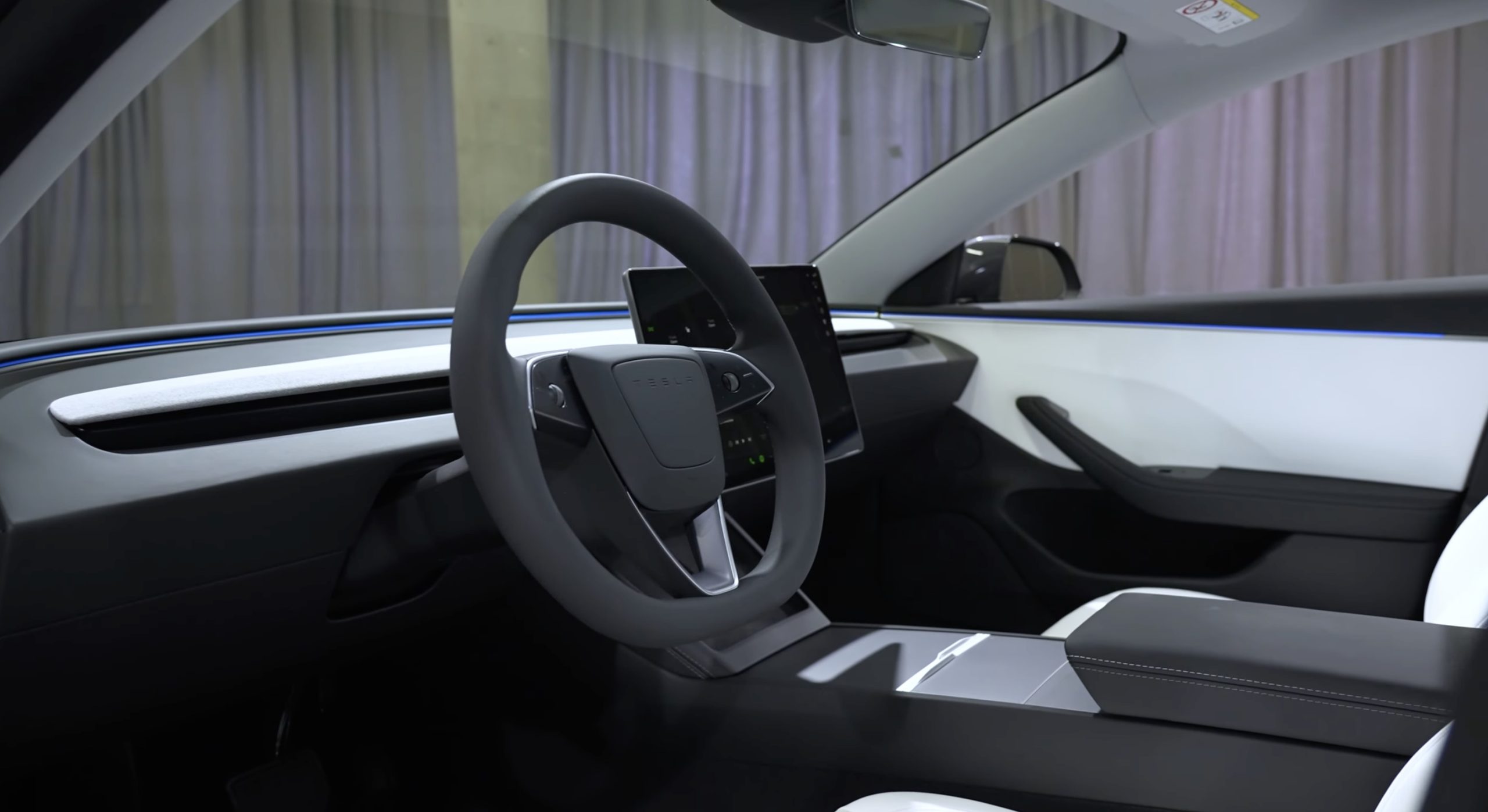
Tesla CEO Elon Musk has announced a major update with texting and driving capabilities on Full Self-Driving v14.2.1, the company’s latest version of the FSD suite.
Tesla Full Self-Driving, even in its most mature and capable versions, is still a Level 2 autonomous driving suite, meaning it requires attention from the vehicle operator.
You cannot sleep, and you should not take attention away from driving; ultimately, you are still solely responsible for what happens with the car.
The vehicles utilize a cabin-facing camera to enable attention monitoring, and if you take your eyes off the road for too long, you will be admonished and advised to pay attention. After five strikes, FSD and Autopilot will be disabled.
However, Musk announced at the Annual Shareholder Meeting in early November that the company would look at the statistics, but it aimed to allow people to text and drive “within the next month or two.”
He said:
“I am confident that, within the next month or two, we’re gonna look at the safety statistics, but we will allow you to text and drive.”
“I am confident that, within the next month or two, we’re gonna look at the safety statistics, but we will allow you to text and drive.”
Does anyone think v14.3 will enable this? pic.twitter.com/N2yn0SK70M
— TESLARATI (@Teslarati) November 23, 2025
Today, Musk confirmed that the current version of Full Self-Driving, which is FSD v14.2.1, does allow for texting and driving “depending on context of surrounding traffic.”
Depending on context of surrounding traffic, yes
— Elon Musk (@elonmusk) December 4, 2025
There are some legitimate questions with this capability, especially as laws in all 50 U.S. states specifically prohibit texting and driving. It will be interesting to see the legality of it, because if a police officer sees you texting, they won’t know that you’re on Full Self-Driving, and you’ll likely be pulled over.
Some states prohibit drivers from even holding a phone when the car is in motion.
It is certainly a move toward unsupervised Full Self-Driving operation, but it is worth noting that Musk’s words state it will only allow the vehicle operator to do it depending on the context of surrounding traffic.
He did not outline any specific conditions that FSD would allow a driver to text and drive.
News
Tesla Semi just got a huge vote of confidence from 300-truck fleet
The confidential meeting marks a major step for the mid-sized carrier in evaluating the electric truck for its regional routes.

The Tesla Semi is moving closer to broader fleet adoption, with Keller Logistics Group wrapping up a key pre-production planning session with the electric vehicle maker’s team this week.
The confidential meeting marks a major step for the mid-sized carrier in evaluating the electric truck for its regional routes.
Keller’s pre-production Tesla Semi sessions
Keller Logistics Group, a family-owned carrier with over 300 tractors and 1,000 trailers operating in the Midwest and Southeast, completed the session to assess the Tesla Semi’s fit for its operations. The company’s routes typically span 500-600 miles per day, positioning it as an ideal tester for the Semi’s day cab configuration in standard logistics scenarios.
Details remain under mutual NDA, but the meeting reportedly focused on matching the truck to yard, shuttle and regional applications while scrutinizing economics like infrastructure, maintenance and incentives.
What Keller’s executives are saying
CEO Bryan Keller described the approach as methodical. “For us, staying ahead isn’t a headline, it’s a habit. From electrification and yard automation to digital visibility and warehouse technology, our teams are continually pressure-testing what’s next. The Tesla Semi discussion is one more way we evaluate new tools against our standards for safety, uptime, and customer ROI. We don’t chase trends, we pressure-test what works,” Keller said.
Benjamin Pierce, Chief Strategy Officer, echoed these sentiments. “Electrification and next-generation powertrains are part of a much broader transformation. Whether it’s proprietary yard systems like YardLink™, solar and renewable logistics solutions, or real-time vehicle intelligence, Keller’s approach stays the same, test it, prove it, and deploy it only when it strengthens service and total cost for our customers,” Pierce said.
News
Tesla extends FSD Supervised ride-alongs in Europe by three months
Needless to say, it does appear that FSD fever is starting to catch in Europe.

Tesla appears to be doubling down on its European Full Self-Driving (Supervised) push, with the company extending its demo ride-along program by three months until the end of March 2026. The update seems to have been implemented due to overwhelming demand.
Needless to say, it does appear that FSD fever is starting to catch in Europe.
Extended FSD demonstrations
Tesla EU Policy and Business Development Manager Ivan Komušanac shared on LinkedIn that the company is offering ride-along experiences in Germany, France and Italy while working toward FSD (Supervised) approval in Europe.
He noted that this provides a great feedback opportunity from the general public, encouraging participants to record and share their experiences. For those unable to book in December, Komušanac teased more slots as “Christmas presents.”
Tesla watcher Sawyer Merritt highlighted the extension on X, stating that dates now run from December 1, 2025, to March 31, 2026, in multiple cities including Stuttgart-Weinstadt, Frankfurt and Düsseldorf in Germany. This suggests that the FSD ride-along program in Europe has officially been extended until the end of the first quarter of 2026.
Building momentum for European approval
Replies to Merritt’s posts buzzed with excitement, with users like @AuzyMale noting that Cologne and Düsseldorf are already fully booked. This sentiment was echoed by numerous other Tesla enthusiasts on social media. Calls for the program’s expansion to other European territories have also started gaining steam, with some X users suggesting Switzerland and Finland as the next locations for FSD ride-alongs.
Ultimately, the Tesla EU Policy and Business Development Manager’s post aligns with the company’s broader FSD efforts in Europe. As per recent reports, Tesla recently demonstrated FSD’s capabilities for Rome officials. Reporters from media outlets in France and Germany have also published positive reviews of FSD’s capabilities on real-world roads.
